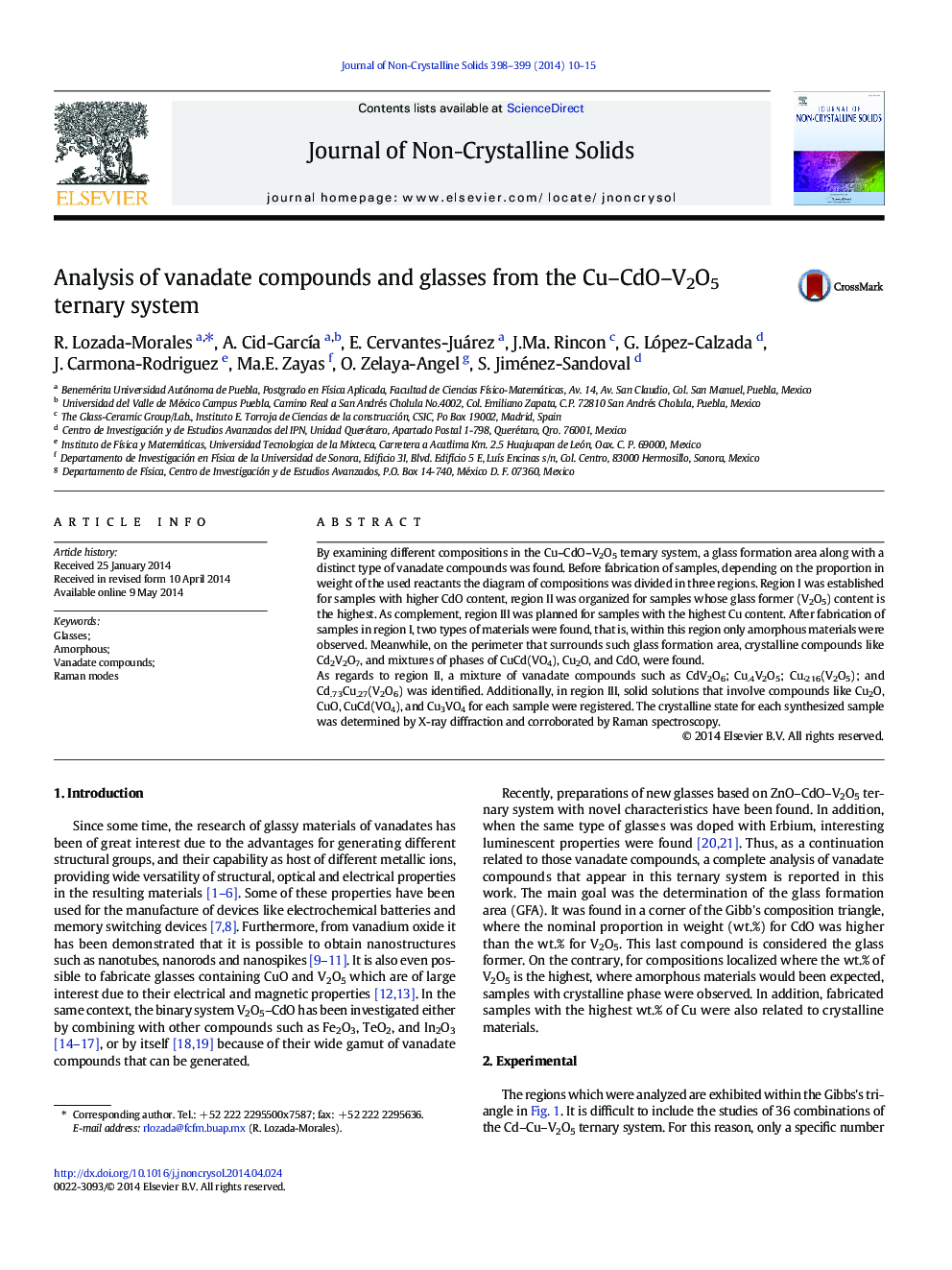| Article ID | Journal | Published Year | Pages | File Type |
|---|---|---|---|---|
| 1480999 | Journal of Non-Crystalline Solids | 2014 | 6 Pages |
•In the Cu–CdO–V2O5 system a glass formation area (GFA) was found.•In the perimeter of the GFA compounds like Cd2V2O7, (CuCdVO4) and others were found.•In most of the amorphous samples a distorted distribution of VO3 and VO4 is included.
By examining different compositions in the Cu–CdO–V2O5 ternary system, a glass formation area along with a distinct type of vanadate compounds was found. Before fabrication of samples, depending on the proportion in weight of the used reactants the diagram of compositions was divided in three regions. Region I was established for samples with higher CdO content, region II was organized for samples whose glass former (V2O5) content is the highest. As complement, region III was planned for samples with the highest Cu content. After fabrication of samples in region I, two types of materials were found, that is, within this region only amorphous materials were observed. Meanwhile, on the perimeter that surrounds such glass formation area, crystalline compounds like Cd2V2O7, and mixtures of phases of CuCd(VO4), Cu2O, and CdO, were found.As regards to region II, a mixture of vanadate compounds such as CdV2O6; Cu.4V2O5; Cu.216(V2O5); and Cd.73Cu.27(V2O6) was identified. Additionally, in region III, solid solutions that involve compounds like Cu2O, CuO, CuCd(VO4), and Cu3VO4 for each sample were registered. The crystalline state for each synthesized sample was determined by X-ray diffraction and corroborated by Raman spectroscopy.
